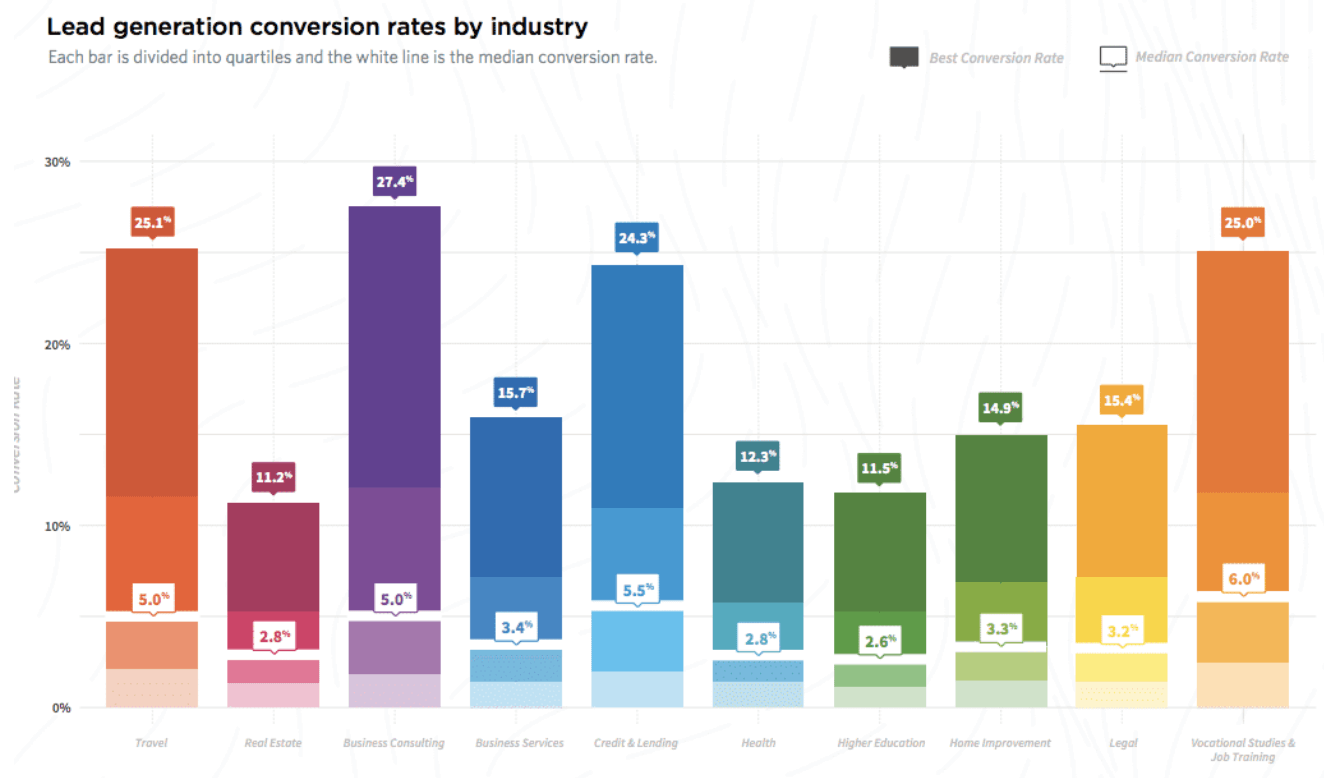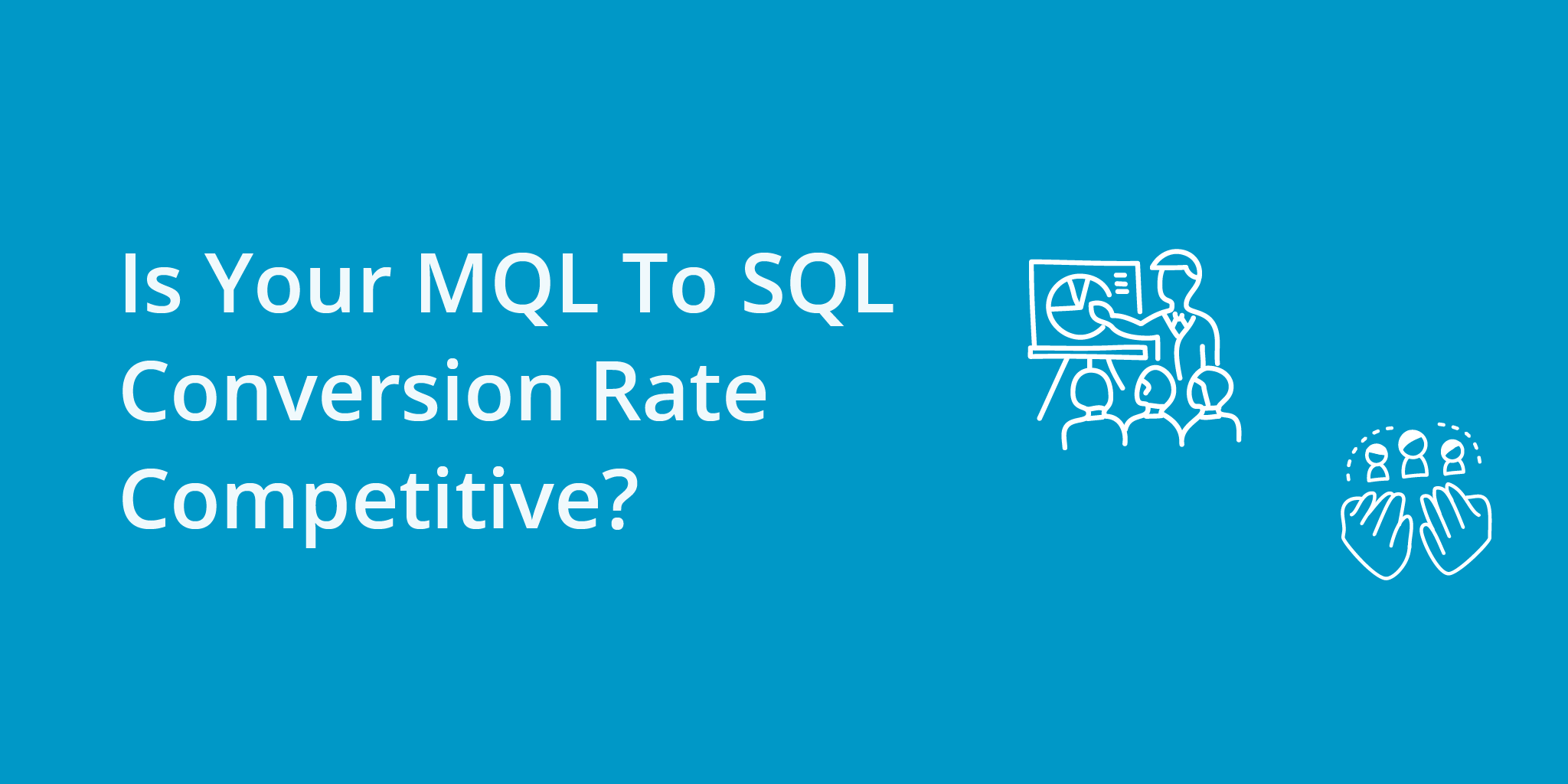In the fast-paced world of sales and marketing, the ability to effectively generate and qualify leads is essential for achieving business growth. One crucial metric that helps gauge the success of this process is the MQL to SQL conversion rate.
As companies strive to optimize their sales and marketing funnels, understanding and improving this conversion rate becomes paramount.
By identifying the qualities that differentiate Marketing Qualified Leads (MQLs) from Sales Qualified Leads (SQLs) and evaluating the transition between these stages, organizations can assess their performance and determine whether their MQL to SQL conversion rate is competitive.
In this article, we delve into the significance of the MQL to opportunity conversion rate, its calculation, and MQL to SQL conversion rate benchmarks for evaluating the effectiveness of your lead generation strategies.
- What is the Difference Between MQL vs. SQL?
- How to Calculate MQL to SQL Conversion Rate
- What is a Good MQL to SQL Conversion Rate?
What is the Difference Between MQL vs. SQL?
In sales and marketing, MQL and SQL are common lead nurturing terms used to distinguish between different stages of a lead’s journey through the sales funnel. Here’s what each term represents:
MQL (Marketing Qualified Lead)
A marketing qualified lead (MQL) refers to a lead that has been deemed more likely to become a customer based on specific criteria set by the marketing team. MQLs are typically generated through marketing activities such as content downloads, webinar registrations, website visits, or other engagement metrics. These leads have shown interest in the company’s offerings but may not be fully ready for direct sales engagement.
SQL (Sales Qualified Lead)
A sales qualified lead (SQL) is a lead that has been qualified by the sales team as having a higher likelihood of making a purchase. SQLs are typically MQLs that have been further evaluated based on specific sales criteria, such as budget, authority, need, and timeline (often referred to as BANT).
The sales team engages with SQLs to assess their requirements, provide more detailed information, and ultimately convert them into customers.
The transition from MQL to SQL represents the handoff from the marketing team to the sales team. MQLs are nurtured by marketing efforts until they meet certain criteria, at which point they are passed on to the sales team as SQLs.
The sales team then focuses on converting SQLs into customers through personalized communication, addressing their specific needs, and guiding them through the purchasing process.
It’s important to note that the exact definitions for MQLs and SQLs vary between organizations, as they depend on specific lead scoring criteria. The definitions can be tailored to suit the specific needs and goals of a company’s sales and marketing teams.
How to Calculate MQL to SQL Conversion Rate
The MQL to SQL conversion rate is a metric used to measure the effectiveness of the lead generation and qualification process in a sales and marketing funnel. It calculates the percentage of Marketing Qualified Leads (MQLs) that successfully transition into Sales Qualified Leads (SQLs).
The formula to calculate the MQL to SQL conversion rate is:
MQL to SQL Conversion Rate = (Number of SQLs / Number of MQLs) x 100
For example, if you had 200 MQLs and 50 of them became SQLs, the conversion rate would be:
(50 / 200) x 100 = 25%
The MQL to SQL conversion rate provides insights into the quality and alignment between marketing and sales efforts. A high conversion rate indicates that the marketing team is effectively identifying and nurturing leads that are likely to become qualified prospects for the sales team.
On the other hand, a lower conversion rate may indicate the need for adjustments in lead qualification criteria or the nurturing process to improve lead quality and increase the chances of conversion.
Tracking the MQL to SQL conversion rate over time helps evaluate the effectiveness of marketing campaigns and strategies. It provides a valuable measure of the success and efficiency of the lead management system, and can help drive improvements in both marketing and sales activities.
What is a Good MQL to SQL Conversion Rate?
The definition of a good MQL to SQL conversion rate can vary depending on several factors. While there is no universally accepted “perfect” conversion rate, here are some general considerations to keep in mind before diving into the numbers.
- Industry standards: It can be helpful to research and benchmark against industry averages to gain a sense of what other companies in your sector are achieving. However, it’s important to note that conversion rates can vary significantly between industries.
- Internal historical data: Analyze your own historical data to establish a baseline conversion rate. By tracking your conversion rate over time, you can identify trends and assess whether you’re improving or falling behind.
- Company goals and expectations: Consider your specific business objectives and expectations. Different organizations may have different goals based on their growth strategies, market conditions, and resources available.
- Sales and marketing alignment: A good MQL to SQL conversion rate also depends on the level of alignment and collaboration between your sales and marketing teams. Strong communication and cooperation can lead to higher-quality leads and better conversion rates.
- Continuous improvement: Rather than focusing solely on a specific number, aim for a conversion rate that shows steady improvement over time. Regularly evaluate your strategies, refine lead qualification criteria, and test new tactics to optimize your conversion rate.
Average MQL to SQL Conversion Rate by Industry
According to data from Salesforce, the average MQL to SQL conversion rate across all industries is just 13%. Further data from Marketing Insider Group shows how the average conversion rate varies based on industry and lead acquisition channel (ie, webinar, website, newsletter, etc), as shown in the image below.

Overall, leads acquired via customer or employee referral, email campaigns, and social media tend to have the highest SQL to close rate. In contrast, events, lead lists and webinars tend to have the lowest SQL to opportunity conversion rates.
Final Thoughts
The MQL to SQL conversion rate serves as a vital metric for evaluating the efficiency of lead generation and qualification in sales and marketing. While there is no universally defined “good” conversion rate, it is crucial to assess your performance based on industry benchmarks, historical data, and your specific business goals.
By continuously analyzing and optimizing your strategies, fostering strong sales and marketing alignment, and striving for consistent improvement, you can enhance your MQL to SQL conversion rate and drive business growth.
Remember, the conversion rate is not a static target, but rather a dynamic measure that demands ongoing attention and adaptation to stay competitive in the ever-evolving marketplace.
By leveraging the insights gained from understanding MQLs, SQLs, and their transition, you can unlock new opportunities and propel your sales and marketing efforts to new heights.



